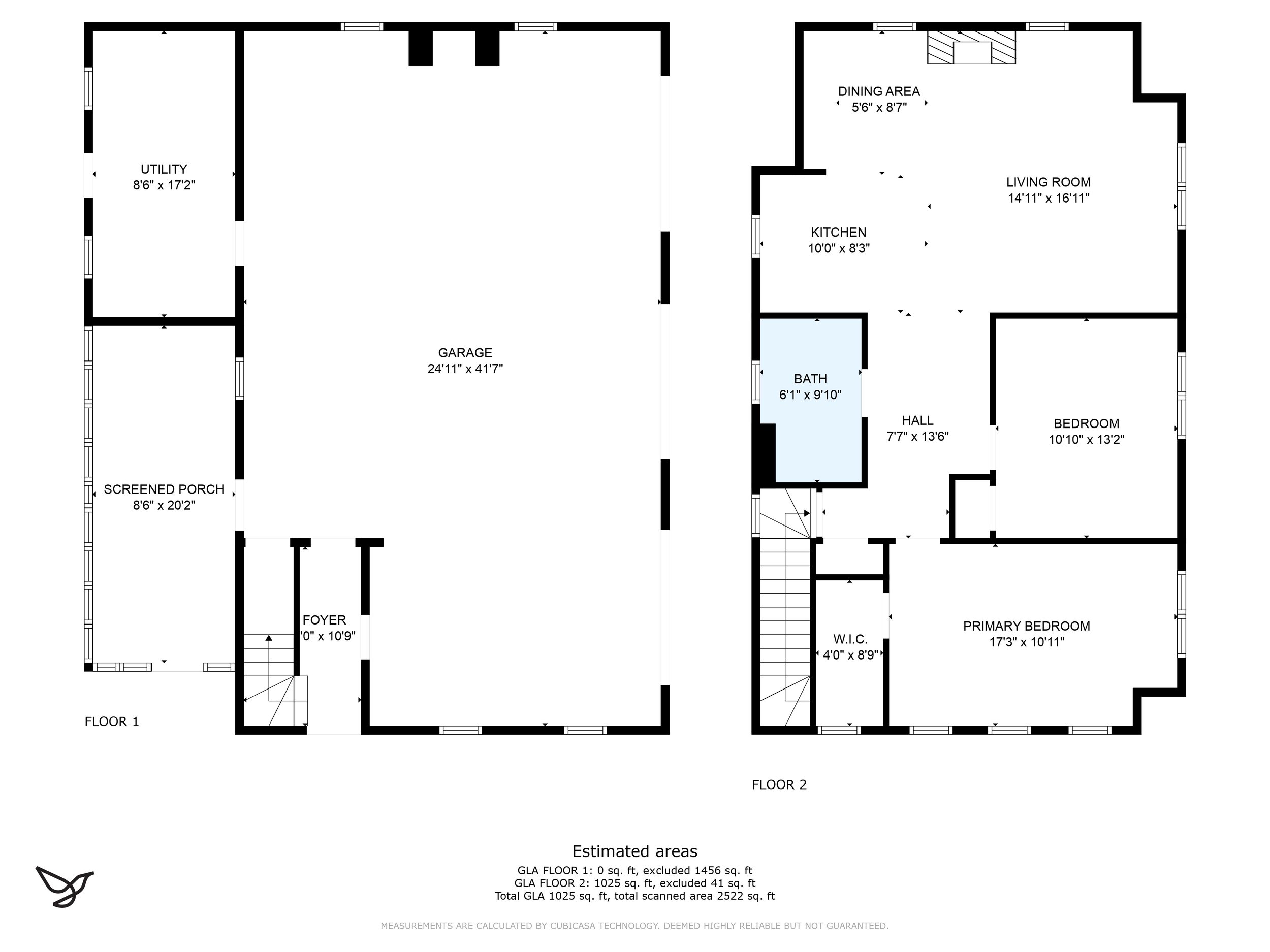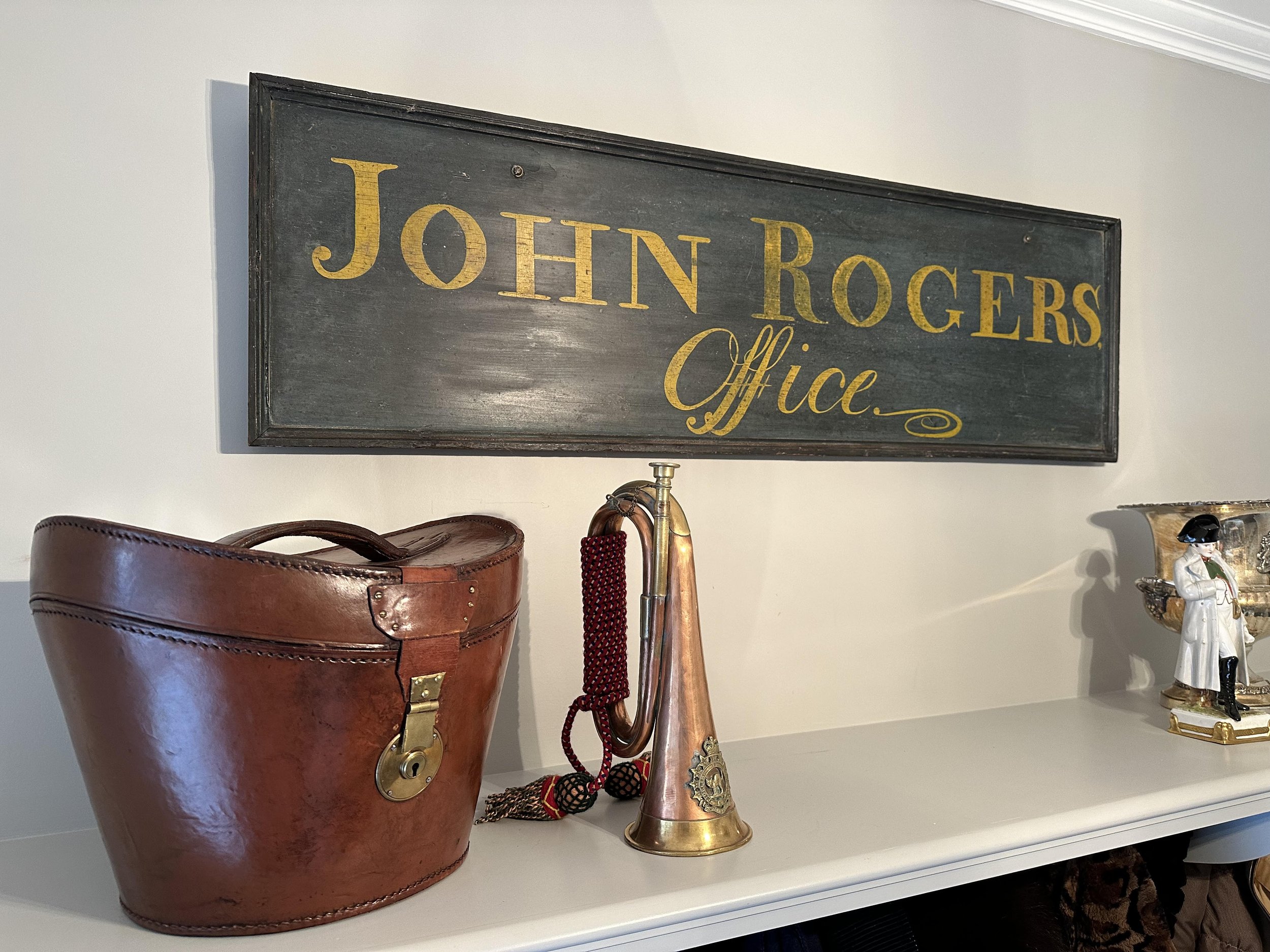
WELCOME HOME - OVERVIEW
PRICE $3,100,000 | Main House: 7 beds, 5 baths, 6,074 sqft | Guest Carriage House: 2 beds, 1 bath, 1,025 sqft | 3.08 acres
Listed By: David Donegan || 603-443-0044 (cell) || david.donegan@snyderdonegan.com
ROGERS HOUSE- One of the seven iconic Ridge Houses that sit prominently facing west in Orford Village, this home has undergone two years of meticulous renovation and restoration under the eye of premium builders G.R. Porter & Sons. The result is a grand, sophisticated home with new systems and endless style and grace. There is ample space for gatherings with family and friends and other private areas throughout the interiors. The kitchen faces east for morning light and is anchored by a premium Aga stove with a custom copper hood, all of which opens to a cozy sitting room with raised fireplace and built-ins. A gorgeous butler's pantry nearby highlights original craftsmanship and woodwork, while the front of the house features formal living and dining rooms and a separate custom library office rounds out the floor. Updated fixtures perfectly complement the period details to seamlessly blend original charm with modern amenities. Three staircases provide access to the second floor with a split landing grand staircase that's a masterpiece of design and engineering. There are seven spacious bedrooms with new bathroom and en suite options to host guests. Additionally, the carriage house offers a lovely and private two-bedroom dwelling. The exteriors are well-landscaped with beautiful, mature trees, shrubs, and an idyllic gazebo anchoring the height of the back lawn. Truly a historic gem, the quality of finish and attention to detail of Rogers House is without parallel.
FLOOR PLANS
MAIN HOUSE
GARAGE APARTMENT
DETAILS
ABOUT ROGERS HOUSE
Orford’s seven Ridge Houses, constructed between 1804 and 1838, are considered one of the premier groupings of rural Federal residential architecture in the country. Highly skilled local builders constructed them, combining their own ingenuity with architectural handbooks, such as those published by Asher Benjamin. Their siting on a ridge—the ancient bank of the Connecticut River—and deep setback from the main road further showcases the splendor of this group.
The Rogers House at the southern end of the row, built between 1817 and 1821, is a well-developed example of Federal style architecture that retains a high level of integrity, particularly on the exterior of the main block, from its historic construction period. An expansion of the house 100 years later carefully duplicated the Federal era detailing. The Rogers House, like the others on the Ridge, is also significant for its setting--a narrow, deep and open lot that sweeps eastward some 325’ to a terrace and then up another 75’ to the building.
HISTORICAL OVERVIEW
In 1814 local lawyer John Rogers acquired an acre plus sixty-four rods of land on Orford’s Ridge. He was the third person to purchase land and build a house on the Ridge. A year later, he built a barn, and two years later, began building his house, starting with the ell, which was sufficiently completed in 1819 for it to be occupied. The ell was two- stories high—less tall and far less deep than the existing ell—and contained a large kitchen on the ground level and single bedroom above it. That same year, Rogers purchased an additional acre plus twenty-two rods behind the barn and commenced building the front part, the main block, of the house. When he completed construction in 1821, the building consisted of the main block, ell, one-story attached shed and a barn that stood a short distance behind the shed.
Architecturally, Rogers used the Wheeler House (1814-16) next door to the south as a model. Both houses feature a two-story, hip-roof, main block with distinctive arched window bays and flush-board siding on the facade. Each also sports an elegant Federal- style entrance, including sidelights and elliptical fanlight with ornamental leaded glass, portico capped with an iron balustrade, mutules with drilled holes and a band of molding beneath them.
Rogers (or his builder) added a distinctive touch to the interior of his house, a staircase in the front hall that split at the landing into two flights continuing in opposite directions which featured an arched opening in the wall at the landing. He also arranged for a carved fireplace surround fashioned of local soapstone in the parlor (living room).
John Rogers (c. 1782-1859) was thirty-two when he purchased the Ridge land. While the barn and ell were under construction, he with his wife Lucy Swinerton and their two children, leased a small house on the Ridge that later became the rear ell of the Wilcox House. The family increased to six children during the time it lived in the house. An Orford native, Rogers was active civically, serving as selectman and justice of peace, in addition to developing a busy law practice. He maintained a love for farming and at his retirement in 1830, relocated to an outlying farm.
Rogers sold his Ridge house, including all the acreage, to another local lawyer, Abiathar G. Britton, whose own house directly across the road had recently burned. Britton and his family relocated to his Ridge house for two years while rebuilding that house, this time in brick. When he moved back in, he rented the Ridge house until his death in 1854. His heirs sold the house to neighbor Daniel P. Wheeler, who immediately resold it to John Cushman and in whose family the house remained for more than eighty years. Cushman’s brother, Hartwell Cushman (1808-1901) and already a tenant during Britton’s ownership, stayed on. A native of Connecticut, Hartwell Cushman moved into the house in the 1840s and occupied it until his death. He and his wife, Mary Ann Earl (1815-1890) of Taunton, Massachusetts, had four children. Hartwell managed a store in the village, which still exists, and later his brother’s store in Orfordville (that eventually relocated to the village, saving Hartwell a long commute by horse and buggy). Like John Rogers, Hartwell served in several town offices, including the school committee and town auditor.
In 1866 John Cushman sold the house to Hartwell and Mary Ann’s son, Henry Cushman, a recent Dartmouth graduate and Universalist minister based in Boston, Cambridge and Providence. His parents continued to reside in the house throughout their lives.
In 1907 Henry Cushman conveyed the house to his niece (and granddaughter of Hartwell), Emily Wilson Fay. Her mother was Pleasantine, Hartwell Cushman’s youngest child and born in Orford. Pleasantine married John T. Wilson, a Boston attorney; they made their home in Winchester, MA, where they raised eleven children and were active in social and civic affairs.
Emily Fay (1873-1964) married Addison Grant Fay (1875-post 1929) in 1896. Ten years later, he succeeded his father as president of the Aetna Powder Company, which produced nitroglycerine dynamite. Headquartered in Chicago, the company had branches in Alabama, Minnesota, Michigan, Kentucky, Missouri and Ohio. In 1914 it was consolidated into the Etna Explosives Company, a competitor of the Dupont Company.
The following year, Emily Fay embarked upon substantial alterations to the couple’s Orford house, most of which remain in place today (see description below). Though much remains to be known about the couple, they likely used the Ridge house as a summer residence. They spent at least part of the winter in Florida and probably traveled extensively.
In 1937 Emily Fay sold the property to William Cushman of Brattleboro, VT, who that same day, sold it to Lyman Tiffany Dyer and his wife Mary Elizabeth.
Subsequent to Emily Fay, other notable owners include Jameson and Bonnie Parker, the former an American actor best known for his starring role in Simon & Simon, a television series in the 1980s, and Judith H. Cross and her husband William, a former senior executive at Reader’s Digest.
Pre-1915 Landscape Notes
Historic views from the 19th century indicate that the front yards of the Ridge houses, including that of the Rogers House, were largely open. Trees were largely relegated to either side of driveways (often referred to as “lanes”). Views of the Rogers House show trees deliberately planted to either side of, but not in front of, the house.
A wooden rail fence along the shared drive that leads to the Rogers House is visible in late 19th century photographs. There was a north-south path that passed by the fronts of each of the Ridge houses; as it crossed the shared driveway of the Rogers and Wheeler houses, pedestrians used the granite steps that are still in place.
1915 Remodeling & Landscaping
The 1915 renovation undertaken by Emily Fay entailed removal of most of the ell, as well as the attached shed and barn, and replacing them with a two-story ell more than three times larger. All of the new construction was designed to carefully match the Federal architecture of the original main block, which was left largely untouched, particularly on the exterior. A new entrance on the south side of the ell mirrored that at the front entrance, including the addition of a portico. All window sash and exterior trim details duplicated those on the main block; a rare exception was a set of three casement windows over the south entrance. What appear to be early 20th century exterior blinds, designed to closely resemble the 19th century blinds that appear in historic photographs, were hung at window openings throughout the house. Two new porches were constructed, a one-story, flat-roof, screened porch on the north side, tucked up against the rear wall of the main block; and a one-story, hip-roof sunporch on the rear wall of the ell.
Inside the house, parts of the main block were remodeled. In the front hall of the main block, paneling was added to the walls of the front hall. The staircase retained its distinctive configuration, but the treads were replaced in oak; closer inspection would determine if the newel posts, handrail and paneling also date from 1915. The southwest room, with soapstone fireplace, interior window shutters, and cornice and chairrail detailing, appears to have been untouched. Upstairs, the two Federal style fireplace surrounds, as well as the soapstone outer face and hearth, in the front bedrooms are probably original, but warrant further inspection. Large closets were added to the rooms, and a connecting bathroom in the front of the house was probably installed at this time. Throughout the main block, new six-panel doors were hung and hardwood floors laid.
Though the original ell was reconstructed and enlarged, the original kitchen fireplace with bake oven was left in place. That former kitchen was remodeled into a large dining room. Double doors on the south wall of the dining room led to a new passage and on the north wall to a new porch. Behind the dining room were a pantry, kitchen, laundry room, and staff dining and sitting rooms. The south room immediately east of the stair hall has a Federal-style fireplace; closer investigation would reveal whether it was a reproduction or a period piece salvaged from another building. A new staircase that matched the front hall staircase in its newel post, railing, and paneling, led to the second floor of the ell. A central hall had two family bedrooms fitted out with large closets with built-in drawers and connecting bathroom on either side. The rear of the ell, set off by a doorway in the hall and serviced by a back stair, held staff bedrooms and a shared bath.
Emily Fay also improved the grounds of the Rogers House. In the front yard, she built a flight of stone steps that led down the terrace slope to a tennis court. Behind the house, Mrs. Fay erected a three-bay garage with quarters above (occupied by a gardener during at least part of Mrs. Fay’s ownership), a highly distinctive tripartite ice house with attached shed and a 25’ heated greenhouse with an attached pottery shed. Cold frames and gardens filled much of the yard. Immediately south of the garage, a fence with an arched gate enclosed the east and west sides of a 20’ x 40’ swimming pool surrounded by a rose garden.
A drive followed the north lot line, terminating in a circle where the land sloped up. At the far east end of the lot, she built a glass-enclosed gazebo with drop-down sash and a fieldstone base that had a sweeping view to the west. Nearby she erected a fieldstone pump house. Along the east lot line, she constructed a fieldstone wall with a flight of steps on each side. With the exception of the greenhouse and tennis court, all of these structures remain. Historic photographs show a large vegetable garden, formal garden and stone steps leading up to the gazebo.
Though an architect(s) was undoubtedly involved in transforming the property, his or her identity is not known.
Information courtesy of the Preservation Easement Baseline Documentation prepared by Elizabeth Durfee Hengen for the New Hampshire Preservation Alliance.
LOCATION
Rogers House is located in beautiful and historic Orford, NH. It is within easy access to shopping, ski resorts, health care services, schools, exercise facilities, and golf courses. An overview of what's nearby is below.
Orford, NH
Orford is a rural community on the Connecticut River in western New Hampshire. Home to approximately 1200 people, Orford is known for its historic “ridge” homes, as well as family farms and small businesses. Much of Orford is forested, providing for a variety of outdoor activities, such as hiking, boating, snowshoeing and hunting. Chartered in 1761, Orford has a history of close ties with its neighboring towns on the Vermont side of the river. Mount Cube, Sunday Mountain and Cottonstone Mountain, Indian Pond and Upper and Lower Baker ponds are distinctive features of the Orford landscape. The Appalachian Trail passes over the summit of Mt. Cube, and the cross-Rivendell trail connects Orford to neighboring Vermont towns. Orford is about 18 miles north of Hanover and Dartmouth College, along the scenic Connecticut River Valley. It’s an easy drive to the White Mountains, Franconia Notch State Park, the Kancamagus Highway, and Lake Winnipesaukee. – Courtesy of orfordnh.us
Other Nearby Towns
Hanover, NH
Woodstock, VT
Quechee, VT
-
Hanover is home to Dartmouth-Hitchcock Medical Center, boutique shopping outlets, fabulous food, and more. One of its main attractions is Dartmouth College (one of the Ivy Leagues and the ninth oldest college in the nation), and in part due to its youthful atmosphere, the town enjoys a lively, 'New England cosmopolitan' business district. Hanover offers an incredible mix of activities from access to the White and Green Mountains to its arts and culture community not to mention the obvious intellectual benefits found in a college town.
-
Woodstock, Vermont is the quintessential New England historic town. It sits in a valley surrounded by low-lying hills that nestle rather than overwhelm, and is a community snuggled around the Ottauquechee River. Woodstock is home to many excellent shops and restaurants, the Woodstock Inn & Resort, a great middle and high school, and it never fails to serve as an incredible place to go for a walk or meet someone for coffee.
Those who choose to reside near Woodstock continue to be some of the most educated in the world, some of the most accomplished “captains of industry” in the country. You’ll find filmmakers, war correspondents, writers, artists, military experts, doctors, high-tech entrepreneurs, rock stars, equestrians and happy soccer moms and dads all grabbing a coffee in town. Woodstock also attracts its fair share of Dutch, English and French, many of whom are reminded of home by the gentle hills, winding dirt roads, cows, sheep and horses in pastures next to beautiful weathered barns. Even if it’s not the old country, it has the feel of a place with deep roots.
-
Quechee is the site of Quechee Gorge on the Ottauquechee River and is also the home to the Quechee Lakes planned community initiated in the late 1960s, which brought to the community the small Quechee Lakes Ski Area in the 1970s. The ski area has 13 trails and 3 lifts. Perched atop the falls of the Ottauquechee River, overlooking a covered bridge, Simon Pearce offers glassblowing demonstrations, a renowned restaurant, and new bar. In addition to the restaurant at Simon Pearce, The Parker House is another great option for dining.
CONTACT US






















































